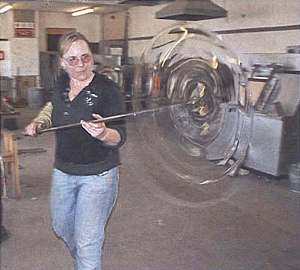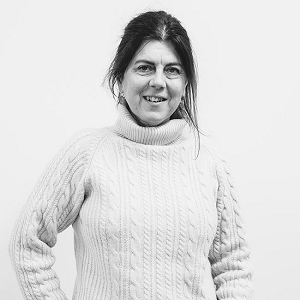
Jerome Harrington's practice-based PhD investigates our relationship to and understanding of the object and its materiality through our understanding of its making process. The project examines the visability of process across the fields of craft and industrial manufacture, with a particular focus on the production of glass.
The study identifies two points of information from which an understanding of process can be learned; the visibility of process both 'in' and 'outside' the object. 'In' referring to the visible or tangible effects of process upon material, and 'outside' to 'points of visibility', images and film which offer glimpses of manufacturing process, often appearing as fragmentary description.
The project investigates these two sets of information, and their role in constructing an understanding of process; and how subsequently this information might inform a relation to or understanding of the object. The term 'learned' is used purposefully to suggest a process of understanding which is contingent.
The PhD project is situated in relation to a number of fields of study which consider our relation to objects and materiality. White within these contexts there is an acknowledgement of the importance of understanding how something is made as part of an analysis of the object and its meaning (Appadurai, 1998 and Daston, 2004), these considerations are usually textual in form, and are marked by a separation between the written consideration and the materiality of the object. It is proposed that by situating art practice at the centre of this study, a new contribution to what is predominantly textual analysis of the object can be made. Art practice can consider the object actively, through its intimate connection to material and process and can test theory through the making of new objects. Of particular importance are the methods of several contemporary artists: Elizabeth Price, Simon Starling, Mel Jackson and Simon Martin.
Recent work has sought to find methods to reveal and record the stranger's understanding of information in and outside the object. This has involved running a number of workshops with students from the SHU Fine Art department, which aimed to make a close reading of a series of photographs depicting manufacturing processes and an object produced as part of the PhD project. In these workshops the student feedback has been recorded and subsequently used as the basis for new work, which expands and elaborates upon the students responses.
To date, two new works have been produced by this method; an ekphrasis description of an object, and a short animation which uses fifty tracings produced by a student group who were asked to trace key features of a range of photographs. Both these works have been presented in a recent solo exhibition called, An Object Described By Fragments (Sheffield Institute of the Arts Gallery, 2012).
Shura page can be accessed here.




